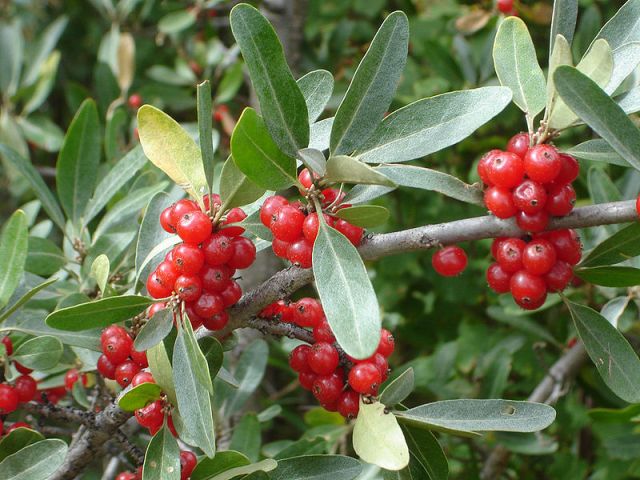Originally published by Nupur Jha on 11/14/13.

Researchers from the University of Saskatchewan unveiled the facts about these prairie fruits, which are also useful in the medical field and for their commercial value.
“There is increasing interest in the commercial development of these fruits since historically it has been thought they may provide nutritional and health benefits,” Dr. Rick Green, Vice President, Technology at POS Bio-Sciences in Saskatoon, co-author of the study, said in a news release.
“Our results provide evidence that these fruits do, in fact, possess such nutritional benefits and contain compounds of interest for their health and wellness attributes. Thus, our work supports the commercial development of buffaloberry, chokecherry and sea buckthorn berries,” Dr. Green added.
They found that Buffaloberry, also known as shepherdia argentea, contains ascorbic acid level 4 times more than oranges. Buffaloberry is also used for treating a number of ailments like tuberculosis, sours, swelling, cuts, arthritis, constipation, venereal diseases, stomach troubles, fevers, acne, boils, stomach cancer, gallstones, body aches and also for gynecological problems, according to AIHDP.
Sea buckthorn contains high amounts of lipids for a fruit; the lipid level is said to vary with variety and location. The flowers and leaves of this fruit are used for curing many diseases like arthritis, gastrointestinal, skin rashes caused by infectious diseases such as measles, ulcers and gout according to WebMD. This fruit is also a rich source of nutrients, minerals and anti-oxidants but very little is known about the fruit’s side-effects. This fruit is believed to slow down the speed of blood clotting and its consumption should be avoided at least two weeks prior to surgery.
Chokecherry consists of anti-oxidants called anthocyanin pigments, which are comparatively greater than cranberries. These anti-oxidants have got anti-inflammatory properties, anti-cancerous and also aid in maintaining heart health. This medical herb helps in soothing the respiratory nerves and allays coughs, asthma and bronchitis, scrofula, fever. It also helps in curbing stomach related illnesses like gastritis, ulcers, etc. according to a report.
These findings about the fruits are good news for fruit growers of Saskatchewan, Canada, as it would lead to increase in demand of these fruits in the markets. More supply of these fruits in the markets would enhance the value of traditionally made foods and also provide more supplements to malnourished people.
“Funding for a major project to investigate and further develop these nutritive-rich ingredients is being sought from the recently established (2010) Global Institute for Food Security (GIFS),” says co-author of the study Dr. Nicholas Low, a Professor of Food Chemistry at the Department of Food and Bioproduct Sciences, University of Saskatchewan.

